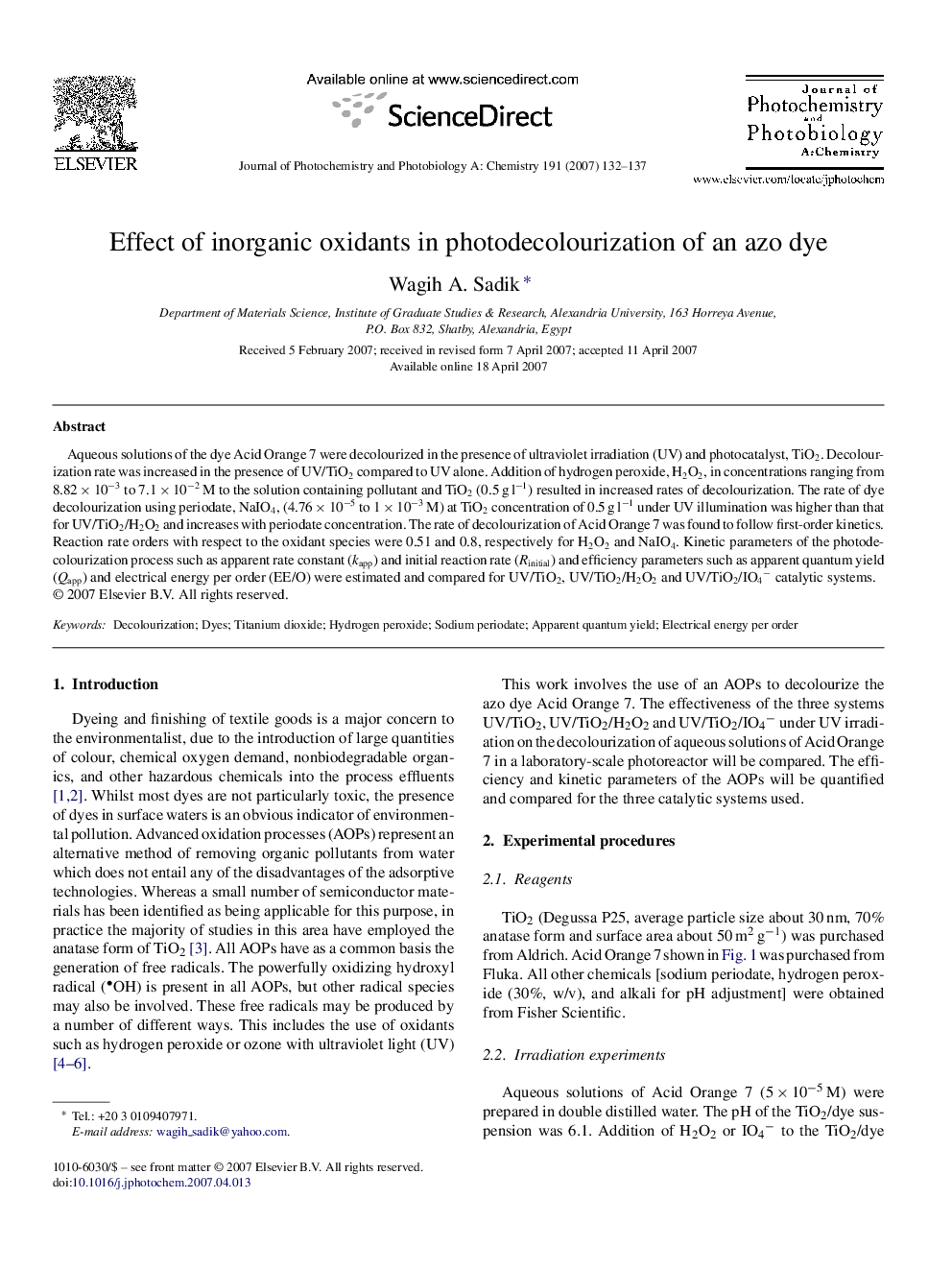| کد مقاله | کد نشریه | سال انتشار | مقاله انگلیسی | نسخه تمام متن |
|---|---|---|---|---|
| 29240 | 44137 | 2007 | 6 صفحه PDF | دانلود رایگان |

Aqueous solutions of the dye Acid Orange 7 were decolourized in the presence of ultraviolet irradiation (UV) and photocatalyst, TiO2. Decolourization rate was increased in the presence of UV/TiO2 compared to UV alone. Addition of hydrogen peroxide, H2O2, in concentrations ranging from 8.82 × 10−3 to 7.1 × 10−2 M to the solution containing pollutant and TiO2 (0.5 g l−1) resulted in increased rates of decolourization. The rate of dye decolourization using periodate, NaIO4, (4.76 × 10−5 to 1 × 10−3 M) at TiO2 concentration of 0.5 g l−1 under UV illumination was higher than that for UV/TiO2/H2O2 and increases with periodate concentration. The rate of decolourization of Acid Orange 7 was found to follow first-order kinetics. Reaction rate orders with respect to the oxidant species were 0.51 and 0.8, respectively for H2O2 and NaIO4. Kinetic parameters of the photodecolourization process such as apparent rate constant (kapp) and initial reaction rate (Rinitial) and efficiency parameters such as apparent quantum yield (Qapp) and electrical energy per order (EE/O) were estimated and compared for UV/TiO2, UV/TiO2/H2O2 and UV/TiO2/IO4− catalytic systems.
Journal: Journal of Photochemistry and Photobiology A: Chemistry - Volume 191, Issues 2–3, 25 September 2007, Pages 132–137